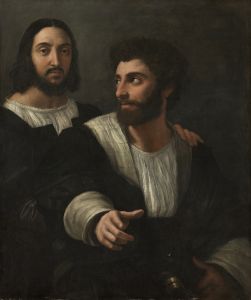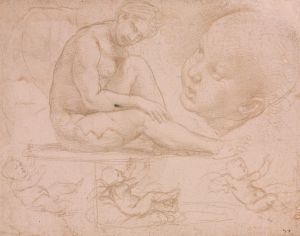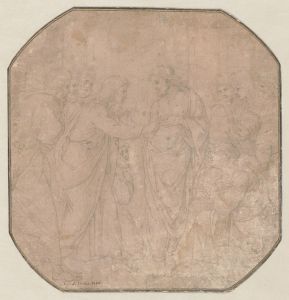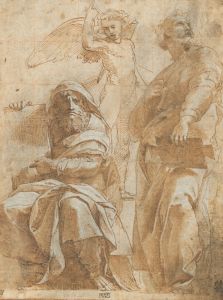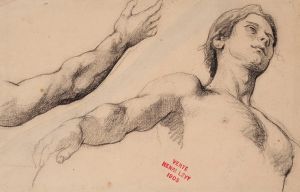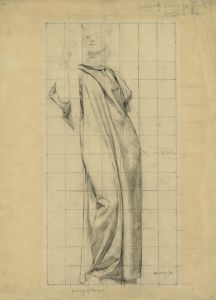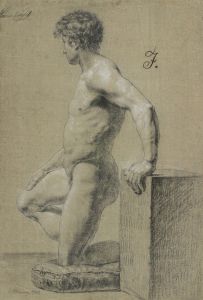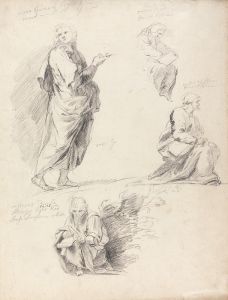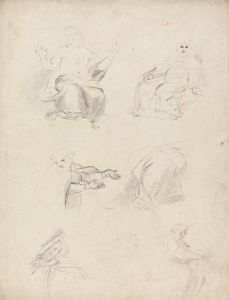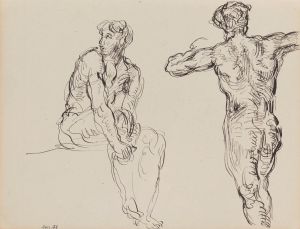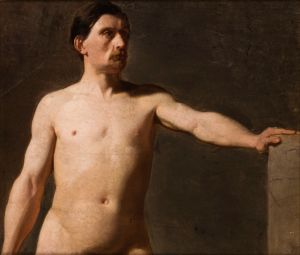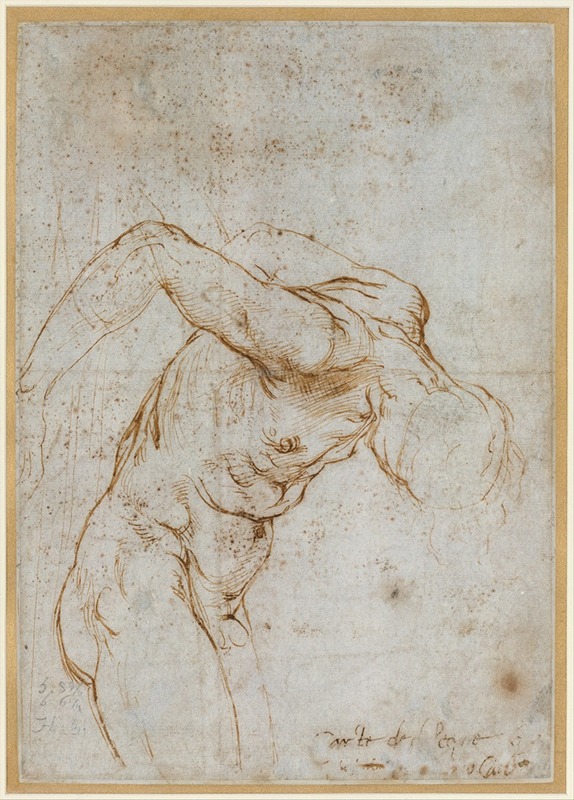
Study of a Nude Male Figure
A hand-painted replica of Raphael’s masterpiece Study of a Nude Male Figure, meticulously crafted by professional artists to capture the true essence of the original. Each piece is created with museum-quality canvas and rare mineral pigments, carefully painted by experienced artists with delicate brushstrokes and rich, layered colors to perfectly recreate the texture of the original artwork. Unlike machine-printed reproductions, this hand-painted version brings the painting to life, infused with the artist’s emotions and skill in every stroke. Whether for personal collection or home decoration, it instantly elevates the artistic atmosphere of any space.
"Study of a Nude Male Figure" is a drawing attributed to the Italian Renaissance artist Raphael, renowned for his contributions to art during the High Renaissance period. Raphael, whose full name was Raffaello Sanzio da Urbino, was born in 1483 in Urbino, Italy, and became one of the most influential painters and architects of his time. His work is celebrated for its clarity of form, balanced composition, and visual achievement of the Neoplatonic ideal of human grandeur.
This particular study is a preparatory drawing, a common practice among Renaissance artists who used such sketches to explore composition, anatomy, and the play of light and shadow before committing to a final painting. Raphael was known for his meticulous preparatory work, which allowed him to achieve the harmonious and lifelike figures that characterize his paintings.
The "Study of a Nude Male Figure" exemplifies Raphael's skill in rendering the human form with anatomical precision and grace. The drawing likely served as a study for a larger composition, possibly a fresco or an altarpiece, as Raphael often incorporated nude figures into his religious and mythological scenes. Such studies were essential for artists of the time to understand the complexities of human anatomy and movement.
Raphael's technique in this drawing demonstrates his mastery of line and form. The contours of the figure are rendered with a fluidity and confidence that suggest a deep understanding of the body's structure. The use of chiaroscuro, the contrast between light and dark, adds volume and depth to the figure, highlighting Raphael's ability to create a three-dimensional effect on a two-dimensional surface.
The drawing is executed in a medium typical of the period, likely using chalk or ink on paper. This choice of medium allowed for both precision and expressiveness, enabling Raphael to capture the subtleties of musculature and posture. The study reflects the influence of Raphael's predecessors and contemporaries, such as Leonardo da Vinci and Michelangelo, who were also deeply engaged in the study of human anatomy.
Raphael's work, including his preparatory studies, had a profound impact on the development of Western art. His ability to synthesize the innovations of his time into a cohesive and aesthetically pleasing style set a standard for future generations of artists. The "Study of a Nude Male Figure" is a testament to his enduring legacy, showcasing the technical skill and artistic vision that made him one of the great masters of the Renaissance.
Today, Raphael's drawings, including this study, are highly valued for their insight into the artist's creative process and are studied by art historians and enthusiasts alike. They offer a glimpse into the meticulous preparation that underpinned his masterpieces and continue to inspire admiration for their beauty and technical prowess.







